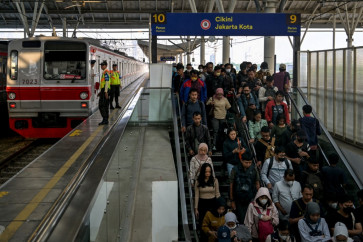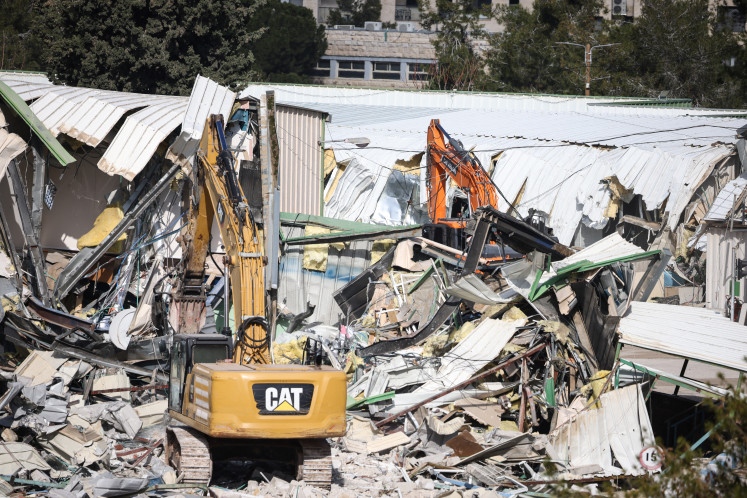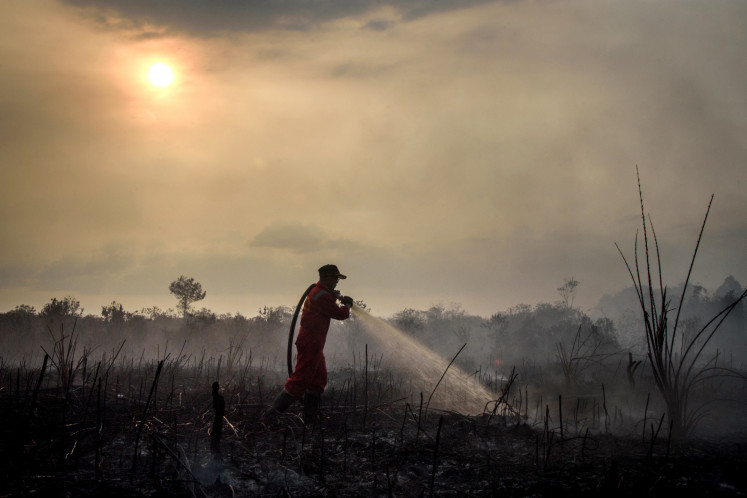Popular Reads
Top Results
Can't find what you're looking for?
View all search resultsPopular Reads
Top Results
Can't find what you're looking for?
View all search resultsInsight: Four stages of Pancasila
Since its conception in 1945, Pancasila (the five principles of the national ideology) has gone through four stages of history over several administrations: conception, period of debates, the stage of engineering and rediscovery
Change text size
Gift Premium Articles
to Anyone
S
ince its conception in 1945, Pancasila (the five principles of the national ideology) has gone through four stages of history over several administrations: conception, period of debates, the stage of engineering and rediscovery.
David Bourchier (2001) has also discussed the fourth wave of ideology in Indonesia although in a period and concept different from mine. He introduced four political ideologies for the country: 1) 1910-1945, romantic traditionalism; 2) mid-1950 to early 1960s, corporatist anti-partysm; 3) 1966-1998, integralist developmentalism; 4) post-Soeharto, the fourth wave.
On the first day of June 1945, Sukarno delivered a speech in a BPUPKI (Indonesian Independence Preparation Investigative Assembly) session in response to a question raised by Radjiman Wedyodiningrat, chairman of the meeting, about national principles - a speech applauded enthusiastically by the audience. A number of national figures had given presentations before Bung Karno. Speakers included Supomo who talked about the requirements for establishing a state (citizens, territory, government), but none talked about principles.
On the session of June 22, 1945 the team of nine chaired by Sukarno included seven words "dengan kewajiban menjalankan syariat Islam bagi pemeluk-pemeluknya" (with an obligation for Muslims to follow the Islamic canon law) in the preamble of the 1945 Constitution. However, before the Declaration of Indonesian Independence, Mohammad Hatta received a message from people of the eastern part of the country about their not joining Indonesia if the team decided to retain the phrase in the draft. He then discussed the issue particularly with Islamic figures.
The 1945 Constitution enacted on Aug. 18, 1945 had therefore no sharia-related lines included, and the first principle of Pancasila was revised to Ketuhanan Yang Maha Esa (Believe in One God). As part of the constitution preamble, the sequence and writings of the principles of Pancasila we know today are different from those drafted on June 1, 1945 following revision by the founding fathers.
The general election of 1955 marked the establishment of Indonesian Konstituante, a constitutional assembly in charge of drafting a constitution. At the time there were debates as to which would be made the principles of the state: Pancasila or any other ideology. Islamic parties supported the idea of Islam as the state ideology while nationalist and communist parties preferred to keep Pancasila.
No side managed to get two-third of the votes, and no resolutions could be made. On July 5, 1959 President Sukarno issued a decree on Konstituante dissolution, and stated that Indonesia should return to the 1945 Constitution - an official recognition of Pancasila in the preamble of the 1945 Constitution effected on Aug. 18, 1945 as the state ideology.
During Soeharto's administration, Pancasila became the single ideology for political parties and mass organizations. Many organizations initially opposed the decision, however, they had no option but to accept it.
The then Kopkamtib (Command for the Restoration of Security and Public Order) banned any events to commemorate the birth of Pancasila as of June 1, 1970. The contribution of Sukarno as the first person to come up with Pancasila was negated on a pretext that there were other people making speeches prior to Sukarno's appearance at the BPUPKI session, and the authentic version of Pancasila was the one ratified on Aug. 18, 1945.
Course books teaching history at school say that Pancasila is the work of all people living in Indonesia over prehistoric through modern times. With Mohammad Hatta, Ahmad Subardjo, A.A Maramis, Sunario and A.G Pringgodigdo as members, the committee of five set up by the president denied the attempt made by Nugroho Notosusanto. It is an irony that the government ignored the conclusion drawn by the committee.
On April 13, 1968, the president issued a decree on the authorized version of Pancasila. The MPR (People's Consultative Assembly) issued a resolution regarding Pancasila upgrading courses in 1978. When the New Order was in force, Pancasila became the single ideology of political parties and mass organizations alike.
The government ran national campaigns on the ideology for the public and in school educational programs. Upgrading sessions were compulsory for all parts of society - from the director's level down to administrators of neighborhood associations - and funded by the state.
Within a period of 10 years, as many as 72 million citizens were successfully upgraded, with no apparent results. The term Pancasila was used for almost anything: Kesaktian Pancasila (sanctity of Pancasila); Sepakbola Pancasila (Pancasila soccer) and Es campur Pancasila (Pancasila iced drink with fruits and syrup). Pancasila, however, was taught as mere points on attitude and behavior (honesty and responsibility, among others) that participants had to learn by heart. Pancasila was also used as a means to quieten people critically voicing concerns. Those who refused to evict their lands were regarded as "non-Pancasila-ists".
In the early days of reform, the Board for Developing Education and the Implementation of Guidelines for Installing and Applying Pancasila or BP7 (Badan Pembinaan Pendidikan Pelaksanaan Pedoman Penghayatan dan Pengamalan Pancasila) was dismissed. Pancasila is still a subject taught at school and in a number of universities and colleges. People have begun to celebrate the anniversary of Pancasila.
Despite the fact that some people still find it difficult to let go of the lingering idea of the New Order's Pancasila upgrading training, there is now an increased yearning for the ideology. Poor economic conditions coupled with a threatening schism and separatism have led people to look back and search for something than can bind all elements of the nation. History has proved that Pancasila is the perfect choice.
The four stages show conflicts and people's consensus with respect to Pancasila. We have agreed that Pancasila can be a unifying force, so why look for another? Searching for a different ideology may result in new conflicts. It would be best to argue only on how to implement each principle when dealing with internal and external issues facing us as people and as a nation as we progress toward the future. Pancasila in the mean time can be taught at school and university using a refreshed and dialogical approach.
The writer is a historian with the Indonesian Institute of Sciences.










